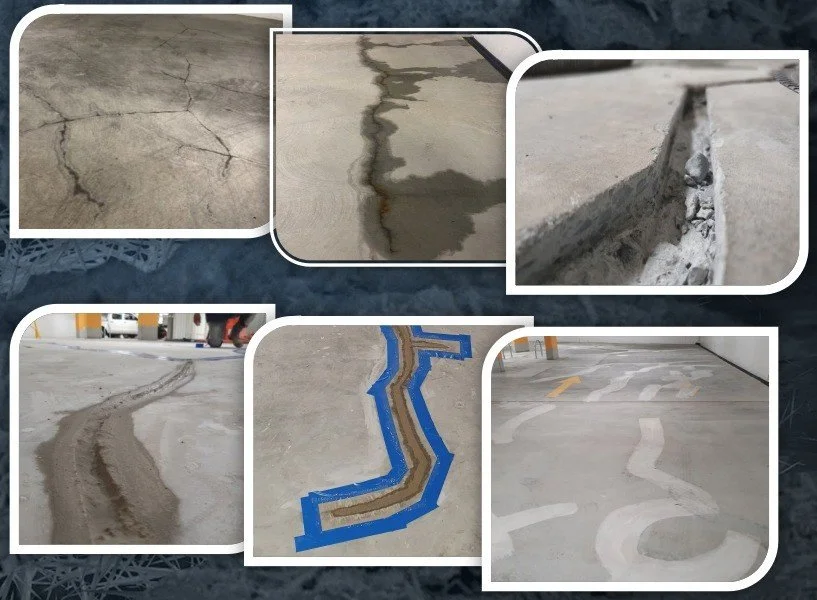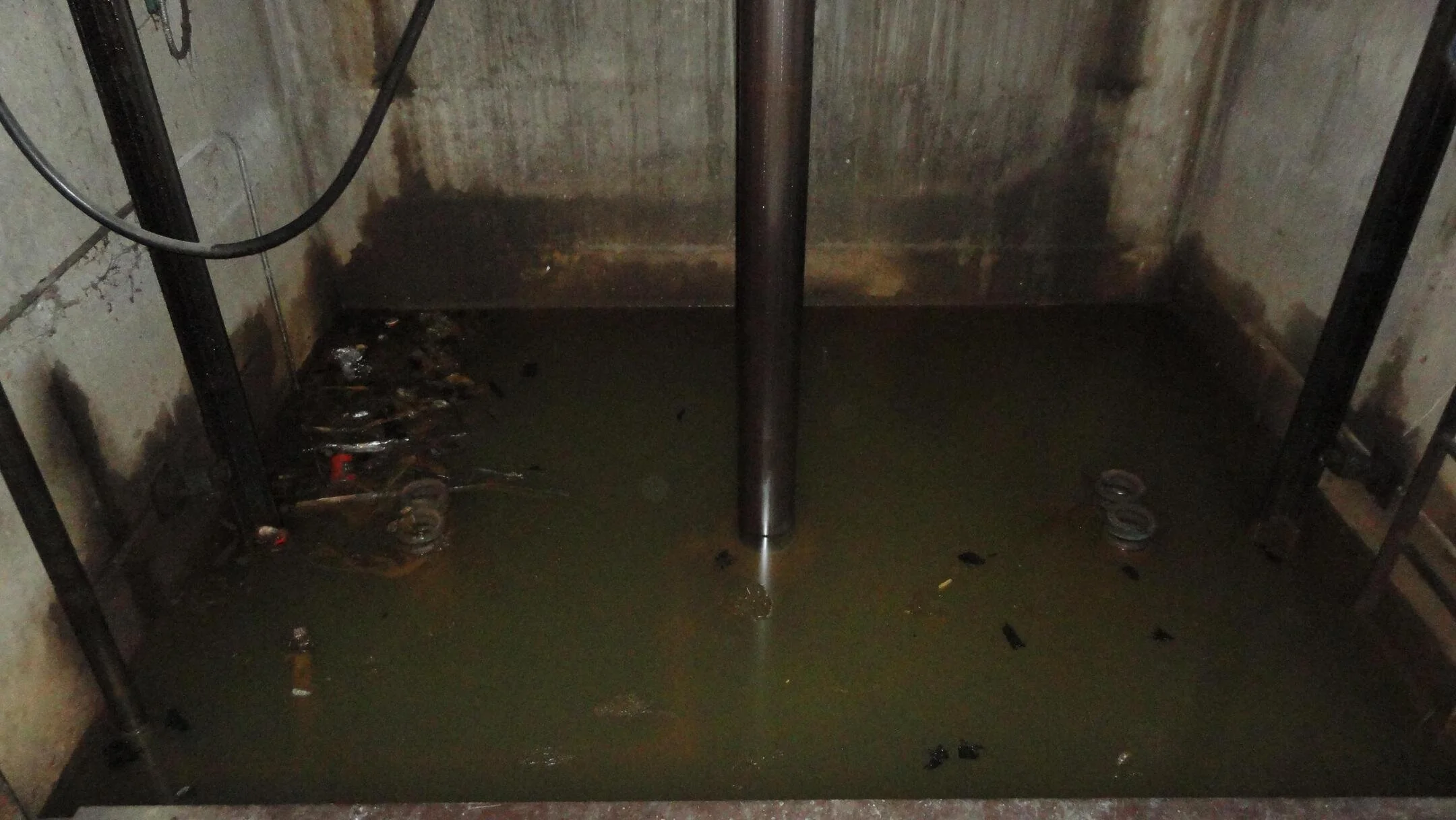How to stop water ingress without epoxy injection or waterproof membranes
Water ingress in concrete structures is one of the most challenging and persistent problems faced by engineers, builders, and strata managers. It can lead to deterioration of concrete, corrosion of reinforcement, mold growth, and ultimately, structural failure if left untreated. While epoxy injection is a commonly specified method for structural crack remediation, it’s not always the best solution for preventing water ingress
Penetron and epoxy injection are used in concrete repair, but they address different needs. Epoxy injection is ideal for structural repairs, particularly sealing cracks, while Penetron offers long-term waterproofing and durability by penetrating the concrete and becoming an integral part of it. Penetron also provides self-healing capabilities for hairline cracks and offers resistance to chemical attack and hydrostatic pressure, making it a preferred choice for long-term protection and durability.
While PU injection is a highly effective solution for remediation of leaking cracks and has been used with success in many instances, there are cases where crystalline systems provide a superior solution from a cost and longevity perspective.
A method of impregnating Penetron’s crystalline technology into existing concrete walls to halt water ingress
Why Epoxy Injection Isn’t Always the Answer
Epoxy injection is designed to fill and bond visible structural cracks. It’s highly effective when dealing with defined, accessible cracks—especially in load-bearing elements. PU injection is also a highly effective alternative to halt water ingress. However, there are drawbacks to injection methods where Penetron excels:
Capillary seepage through porous concrete
Voids or honeycombing caused by poor compaction
Cold joints or tie holes with severe active leaks
Widespread dampness without a single injection point
In these scenarios, epoxy injection can be:
Cost-prohibitive due to the number of required injection ports and likelihood of multiple attempts to stop the leak, quoting is difficult and cost blowouts more likely
Ineffective because no discrete crack exists to contain the resin
Difficult to execute in some cases
That’s where Penetron’s crystalline waterproofing system becomes an ideal remedial alternative.
An ideal scenario to stop leaks with Penetron
In this image, moisture and active leaks are present on the negative side of the wall. In this instance, epoxy/PU injection would be expensive and possibly ineffective due to there being no visible cracks to inject.
The Penetron system would provide a long lasting, warrantable solution in a scenario such as this.
What Is the Penetron System?
The Penetron system is a suite of crystalline products that penetrate the concrete matrix and form insoluble crystals in capillaries, pores, and micro-cracks. These crystals effectively block water pathways while allowing the concrete to remain vapor-permeable.
Unlike membranes or coatings that rely on surface adhesion, Penetron’s remedial products work from within—creating a long-lasting waterproof barrier that doesn’t peel, puncture, or deteriorate with time.
The Core Remedial Products: Penetron, Penecrete Mortar, and Peneplug
1. Penetron (Topical Crystalline Treatment)
Penetron is a cementitious, crystalline waterproofing material applied to the surface of existing concrete as a slurry. Once applied and moistened, it penetrates into the concrete and initiates a catalytic reaction with the free lime and moisture, forming permanent, water-insoluble crystals.
Key applications:
Leaking retaining walls and basement walls
Slabs on ground
Concrete tanks and pits
Lift pits and bunded areas
It can be applied internally, even when water is entering the structure, making it ideal for negative-side waterproofing.
2. Penecrete Mortar (Crack and Joint Treatment)
Penecrete Mortar is a crystalline-modified repair mortar used to seal:
Active leaks through cracks and construction joints
Voids, honeycombed areas, and tie holes
Cold joints that are allowing seepage
It is typically used in conjunction with Penetron to address visible defects before surface application.
Use of Peneplug and Penecrete Mortar to seal active leaks rising up through the slab
3. Peneplug (Rapid-Set Water Stop)
Peneplug is a fast-setting, hydraulic repair compound designed to immediately stop active water leaks, even under high hydrostatic pressure.
Use cases include:
Plugging gushing leaks in retaining walls or slabs
Temporarily sealing leaks before a full Penetron/Penecrete repair
Peneplug sets in 30–90 seconds and is safe for potable water applications.
PenePlug for leaking coil ties
Coil ties are a necessary component of formwork when constructing concrete walls, however, they are often a source of water ingress as the coil tie penetrates the full width of the wall. If not sealed correctly on the positive side, leaks can occur on the negative side.
Peneplug is an ideal solution for plugging coil ties effectively, regardless of the severity of the active leak.
How the Penetron System Works in Remedial Applications
Once applied, the Penetron system begins a catalytic reaction inside the concrete that causes crystal formation in the pores, micro-cracks, and capillaries.
These crystals:
Block water ingress permanently
Reactivate in the presence of moisture (self-healing up to 0.5mm+)
Grow deep into the concrete—up to 30 cm in some cases
Even concrete that appears sound can be highly porous, especially if improperly vibrated or compacted. Penetron fills these voids without the need for injection, making it ideal for:
Concrete walls and slabs with damp patches
Elevator pits or basements experiencing rising damp
Water tanks or pits with internal seepage from surrounding groundwater
Swimming pools with negative side (exterior) access
Source-Verified Case Study
Case Study: Seepage Through Lift Pit Walls – Australia
An engineering remediation project involved a lift pit experiencing water ingress through the base and wall interfaces. No visible cracking was evident, but the seepage was significant. Rather than inject epoxy/PU into invisible defects, the project team used:
Peneplug to halt active water inflow
Penecrete Mortar to treat wall-floor joints and tie holes
Penetron as a surface application over all internal surfaces
The waterproofing was successful, and the lift pit remained dry over the following year under observation. This case is cited in the ACSE Remediation Conference 2022 presentation by Penetron Australia.
Image provided is not the lift pit mentioned above. For illustrative purposes only
Installation Process for Remedial Waterproofing
Surface Preparation
Remove paint, coatings, oil, and laitance
Mechanically roughen to open the concrete pores for best absorption
Leak Control
Apply Peneplug to any gushing leaks
Monitor for further water movement before continuing
Crack and Joint Sealing
Chase cracks or joints open
Apply Penecrete Mortar to fill and seal
Surface Waterproofing
Apply Penetron as a slurry coat using brush or spray
Keep surface moist for several days to accelerate crystal growth
Common Misconceptions
🔹 "Penetron only works for new concrete."
False. The surface-applied Penetron system is specifically designed for remedial waterproofing of existing concrete.
🔹 "You need to stop all water before applying."
No. Peneplug is designed to plug active leaks instantly, allowing Penetron and Penecrete to be applied afterward.
🔹 "It’s just a surface sealer."
Incorrect. Crystalline products penetrate into the concrete and grow deep inside, making the waterproofing integral.
Final Thoughts
If you’re dealing with water ingress and are looking for a remedial solution that is guaranteed to hold up for decades, Penetron’s remedial waterproofing system could be the solution.
Its ability to treat porosity, cold joints, and construction defects in all site conditions makes it a superior choice in many cases.
Why TruBond Recommends Penetron
At TruBond Concrete Repairs, we are well versed in application of Penetron’s warranted system and prioritize long-term waterproofing strategies that work from within the structure, not just on the surface. The Penetron system gives us the flexibility to treat complex leak paths in situations where epoxy/PU injection may not be the best fit solution.
✅ Certified in Penetron surface and joint remediation systems
✅ Liaison for certification, compliance and warranty
✅ Service coverage for strata, industrial, and infrastructure clients
Book a no-obligation site assessment today to see if Penetron is the right fix for your leak issue.





